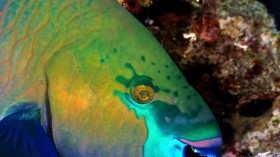Scientists are finding ways to make euthanizing as humanely as possible. The latest solution: beer, at least for invertebrates.
Unlike vertebrates, invertebrates' perception of pain and distress is poorly characterized. The research is one of the first of its kind to look into invertebrates' response to aversive stimuli.
"There are already strict protocols established for research with certain animals. You have to be sure they are not in pain and that they are treated humanely," Cody Gilbertson, a graduate student at ESF, explained in a news release. "There's not much out there regarding the treatment of invertebrates."
According to scientists at SUNY College of Environmental Science and Forestry, beer has some calming effect that makes death peaceful for invertebrates. To find out how beer affects the state of pain in invertebrates, the scientists submerged snails in a few ounces of beer, United Press International reported. One experiment involved submerging them into 95 percent ethyl alcohol while the other is at five percent. In both experiments, the snails reacted the same, with less physical distress.
"We wanted to see if there was a way to minimize suffering and minimize the tissue damage that occurs when you put them straight into 95 percent ethyl alcohol," Gilbertson said. "We aren't yet certain what pain these animals experience, but veterinarians can look for changes in tissue structure to better understand how the snails are reacting."
According to Gilbertson, any ale will do the calming trick. Currently, scientists are using the method of directly dipping snails into formaldehyde when its time to kill them of. The researchers say it is actually unacceptable, which is why their finding about beer makes a lot of difference.
"Our finding that beer, a globally available beverage, so effectively anesthetizes snails offers a new technique promoting good welfare for invertebrate research subjects everywhere," Dr. Jeffrey D. Wyatt, said, as quoted by Phys.org. "This is especially true for our population health studies of free-ranging endangered snails in remote locations from Tahiti to Chittenango Falls."
The findings were published at n the September issue of the Journal of the American Association for Laboratory Animal Science.
© 2024 NatureWorldNews.com All rights reserved. Do not reproduce without permission.





